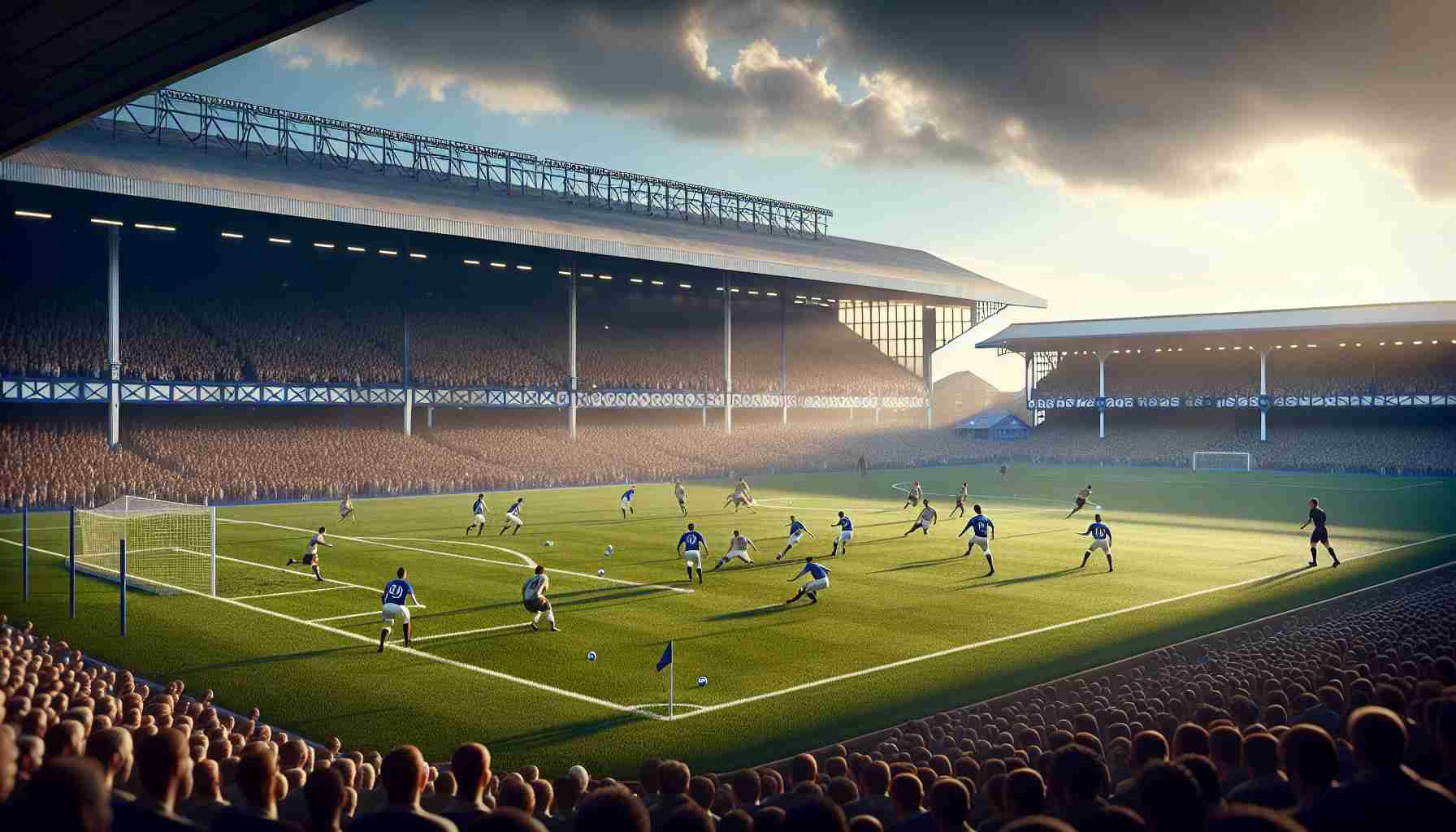- Everton prepares for its final match against Liverpool at Goodison Park before moving to Bramley-Moore Dock Stadium, marking the end of an era.
- This derby is historically significant, with the head-to-head record tied at 41 victories each at Goodison, making this 120th encounter decisive.
- The match was postponed due to Storm Darragh, heightening anticipation for a dramatic closure to a historic rivalry.
- David Moyes returns as Everton’s manager, revitalizing the team and leading them to three consecutive victories.
- Goodison Park holds memories of key moments, such as John Barnes’ fight against racism and post-Hillsborough unity.
- Fans are united in bidding farewell to Goodison, reflecting on its history while hoping for a vibrant future.
The echoes of past battles reverberate through Goodison Park as Everton braces for its swan song against Liverpool. The historic rivalry, etched into the very architecture of the ‘Grand Old Lady,’ finds itself at a poignant crossroads—one last dance before Everton moves to Bramley-Moore Dock Stadium. This upcoming derby, promising passion and intensity, represents more than just a match; it is the culmination of over a century’s worth of hopes and heartbreaks shared by Evertonians and their red-clad neighbors.
With the head-to-head derby record teetering at a balance—each team having bagged 41 victories at Goodison—this 120th encounter will tip the scales, closing an era with either blue or red hues. This final battle, initially postponed due to Storm Darragh’s wrath, offers a thrilling promise of tipping tradition with a decisive victory.
David Moyes, back at the helm of Everton, has infused new energy into the team. Moyes, revered for his transformative work in the early 2000s, once again stands as the catalyst for change, pulling Everton out of the relegation shadows and steering them toward a realm of cautious optimism. Under his guidance, the Toffees have demonstrated renewed grit, clinching three consecutive wins, a testament to Moyes’ enduring magic.
In the twilight of Goodison’s glorious past, memories of fierce encounters flicker like old reels. From John Barnes’ unforgettable stand against racism to the heartwrenching post-Hillsborough unity, the stadium has been a canvas of raw human emotion.
As fans gather for this final Goodison chapter, the sentiment is unanimous—bidding farewell to a cherished fortress, the vibrations of history underfoot, they whisper collective wishes for a future as spirited as their storied past.
Will Everton’s Final Goodison Park Derby Deliver a Memorable Farewell?
Insights into Everton’s Historic Transition
As Everton Football Club prepares for its monumental transition from Goodison Park to Bramley-Moore Dock Stadium, fans and analysts alike are buzzing with questions about what this means for the club’s future. The move signifies both an end and a new beginning, with the final derby against Liverpool at Goodison Park marking a historic event that deserves a deep dive beyond the headlines.
Real-World Use Cases: A New Era for Everton
The move to a state-of-the-art facility at Bramley-Moore Dock is not just about upgrading infrastructure; it’s about evolving as a club.
1. Economic Revitalization: The new stadium is poised to boost the local economy by attracting more fans and hosting significant sporting and non-sporting events.
2. Enhanced Fan Experience: Modern amenities and improved services promise a personalized and more comfortable viewing experience for fans.
3. Sustainability Initiatives: The new stadium aims to incorporate eco-friendly designs, reducing energy consumption and carbon footprint.
Market Forecasts & Industry Trends
The trend of English clubs moving to new stadiums continues, with recent examples showing the dual benefit of improved revenue streams and enhanced fan engagement. According to Statista, clubs moving to new or renovated stadiums have experienced significant boosts in matchday revenues, sometimes increasing by up to 50%.
Reviews & Comparisons: Goodison vs. Bramley-Moore
Goodison Park is renowned for its intimidating atmosphere and deep-rooted tradition. However, it lacks the amenities of modern stadiums, such as hospitality suites, that are crucial for generating higher income.
Bramley-Moore Dock Stadium promises:
– Increased Capacity: Accommodating more fans than Goodison’s 39,414 capacity.
– Advanced Facilities: High-tech screens, premium seating, and better accessibility for those with disabilities.
Controversies & Limitations
Though the new stadium promises progress, it doesn’t come without debates:
– Historic Loss: Some fans argue the loss of Goodison’s historic character will dilute Everton’s identity.
– Financial Concerns: The project’s cost, initially estimated at approximately £500 million, raises questions about long-term financial stability.
Pros & Cons Overview
Pros:
– Enhanced revenue opportunities.
– Improved facilities and fan experience.
Cons:
– Risk of losing traditional atmosphere.
– Financial burden from construction costs.
Security & Sustainability
The new stadium is expected to feature advanced security systems along with sustainable practices such as rainwater harvesting and energy-efficient lighting, aligning with global sustainability trends.
Actionable Recommendations
For fans and stakeholders invested in Everton’s future:
– Embrace Change: Attend games at the new stadium to support the club as it grows and evolves.
– Preserve History: Participate in initiatives that celebrate and commemorate Goodison Park’s legacy.
– Sustainability Advocacy: Encourage and support Everton’s sustainability initiatives at Bramley-Moore Dock.
The potential for a bright future lies in the balance of maintaining tradition while embracing innovation. Everton’s fans, celebrated for their passion and loyalty, are crucial in transitioning these elements into the new era. Keep an eye on trend analysis and community updates at Everton FC as the journey unfolds.
